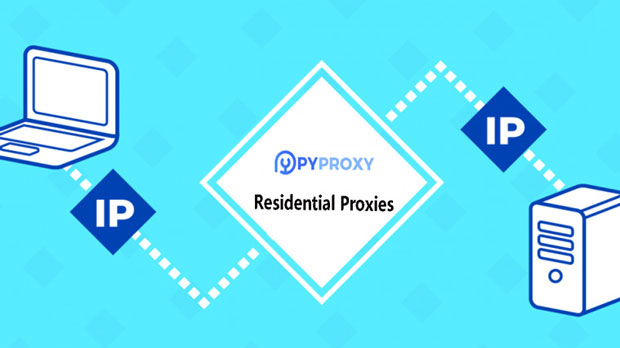The advancement of networking technology has led to the increasing adoption of various proxy solutions to secure and optimize online activities. One such solution is the Socks5 configurator, which has gained attention as a potential replacement for traditional proxy tools. This article will examine whether the Socks5 configurator can effectively replace conventional proxies, with a focus on practical application, advantages, and limitations. A deep dive into its capabilities, configuration, and how it compares to traditional proxy tools will provide valuable insights for users and businesses looking to enhance their network security, privacy, and overall online experience. Understanding Socks5 Configurator and Traditional Proxy ToolsTo assess whether the Socks5 configurator can replace traditional proxy tools, it’s crucial to first understand what each of these solutions offers.Socks5 Configurator:Socks5 is a protocol designed for use with proxies, which provides a flexible way to route internet traffic. A Socks5 configurator is a tool that simplifies the configuration and management of this proxy protocol. It enables users to set up and connect to Socks5 servers, allowing secure internet browsing, enhanced privacy, and the ability to bypass geographical restrictions. Unlike other proxy types, Socks5 supports a variety of traffic types, including TCP and UDP, making it suitable for a wider range of applications.Traditional Proxy Tools:Traditional proxy tools, such as HTTP and HTTPS proxies, are designed to route traffic through an intermediary server. These proxies typically work by intercepting and forwarding user requests to the internet, which helps to mask the user’s IP address and maintain privacy. However, traditional proxies often have limitations, such as a lack of support for certain types of traffic or slower speeds, which can be a concern for users needing more advanced solutions.Advantages of Using Socks5 Over Traditional Proxy ToolsThe Socks5 configurator offers several advantages over traditional proxy tools, making it an appealing option for those looking to enhance their internet experience.1. Versatility and Broad Traffic Support:Unlike HTTP proxies, which are limited to web traffic, Socks5 supports a wide range of protocols, including FTP, email, and P2P traffic. This makes it a more versatile solution for users who require proxy support for various applications beyond simple web browsing. Whether for secure file transfers or enhanced privacy during peer-to-peer activities, Socks5 is a more robust choice.2. Enhanced Performance:Socks5 generally provides better performance compared to traditional proxies because it operates at a lower level in the networking stack, bypassing certain layers of communication that might otherwise slow down data transfer. This results in fewer interruptions and faster connections, making it an excellent choice for tasks requiring a higher bandwidth, such as streaming and online gaming.3. Greater Privacy and Security: socks5 proxies provide a higher level of privacy and security by not altering the data sent between the user and the destination server. It doesn’t add extra headers or modify data like HTTP proxies, which helps to preserve the integrity of the communication. Additionally, Socks5 can be used in conjunction with encryption methods, offering an extra layer of protection against potential cyber threats.Challenges and Limitations of the Socks5 ConfiguratorWhile the Socks5 configurator offers multiple benefits, it does have certain challenges and limitations that must be considered.1. Complexity in Setup and Configuration:One of the main drawbacks of Socks5 configurators is the level of technical knowledge required to set up and configure the system properly. Unlike traditional proxy tools, which often come with easy-to-use interfaces, Socks5 configurators may require more detailed configuration steps, including the manual input of server addresses, port numbers, and authentication settings. This can be a barrier for less tech-savvy users who may prefer the simplicity of traditional proxies.2. Limited Web Proxy Support:Although Socks5 supports a wide range of traffic types, it may not be as effective for users specifically seeking a simple web proxy solution. HTTP and HTTPS proxies are still preferred in many scenarios where only web traffic needs to be routed, as they are optimized for these specific use cases and can often handle high volumes of requests efficiently. For users who do not require the advanced features of Socks5, traditional proxies may be a simpler and more cost-effective option.3. Compatibility Issues:Some applications or websites may not fully support Socks5 proxies, potentially limiting the functionality of the configurator in certain environments. Traditional proxies, especially HTTP and HTTPS, are more universally supported and tend to work seamlessly with most applications that rely on web traffic. Users who need broad compatibility might find traditional proxy tools more reliable in these cases.Practical Applications of Socks5 in Modern Network SolutionsWhen considering the potential for Socks5 configurators to replace traditional proxies, it is essential to evaluate their practical applications in modern network environments.1. Bypassing Geographical Restrictions:Socks5 is particularly effective in bypassing geographical restrictions, which makes it a valuable tool for users looking to access content blocked in certain regions. While traditional proxies can be used for this purpose, Socks5 provides a more reliable and faster connection, which is crucial for high-demand activities such as streaming video content.2. Enhancing Online Privacy:For individuals or businesses concerned about maintaining privacy online, Socks5 provides a more secure alternative to traditional proxies. By not modifying the data being sent between the client and the server, it ensures that communication remains private and unaltered. This can be particularly useful in situations where sensitive information is exchanged.3. Peer-to-Peer and Torrenting:Socks5 is widely regarded as one of the best proxy protocols for peer-to-peer activities, such as torrenting. The ability to support UDP traffic makes it an ideal choice for users seeking to maintain privacy and performance while participating in file-sharing networks. In contrast, traditional proxies are often less effective for P2P applications and may cause slower download speeds.Conclusion: Can Socks5 Replace Traditional Proxy Tools?In conclusion, the Socks5 configurator has the potential to replace traditional proxy tools for many users, especially those requiring a more versatile and performance-oriented solution. Its ability to support a wide range of traffic types, enhance privacy, and deliver faster speeds makes it a compelling choice for various use cases, from secure browsing to peer-to-peer networking. However, the complexity in setup, limited web proxy support, and compatibility issues with certain applications may prevent it from being a complete replacement for traditional proxy tools in all scenarios.Ultimately, the choice between Socks5 and traditional proxies depends on the specific needs of the user. For those seeking more robust performance and privacy, the Socks5 configurator is an excellent option. However, for simpler, web-focused tasks, traditional proxy tools may still be the preferred solution.
Jan 15, 2025



























































